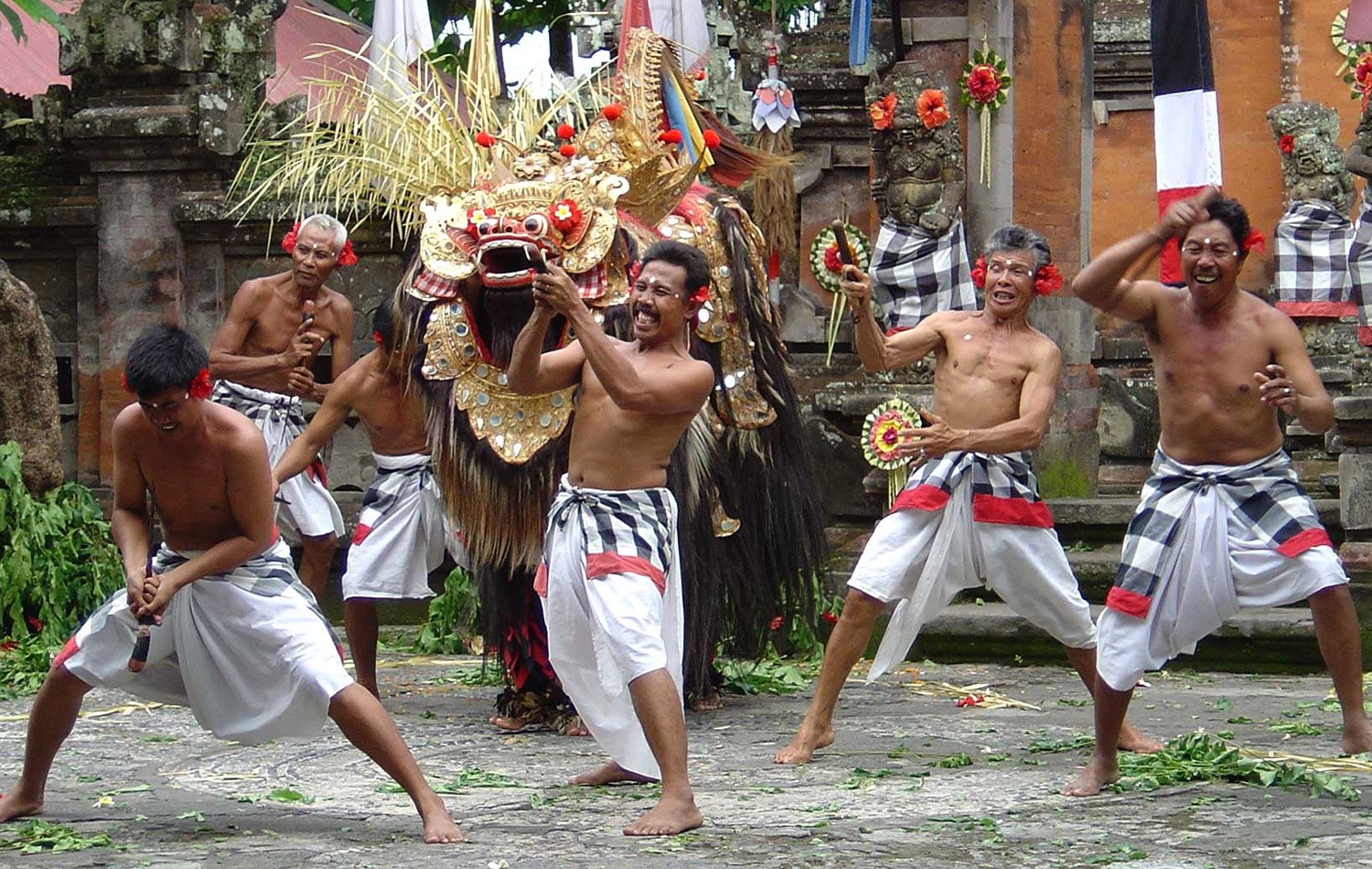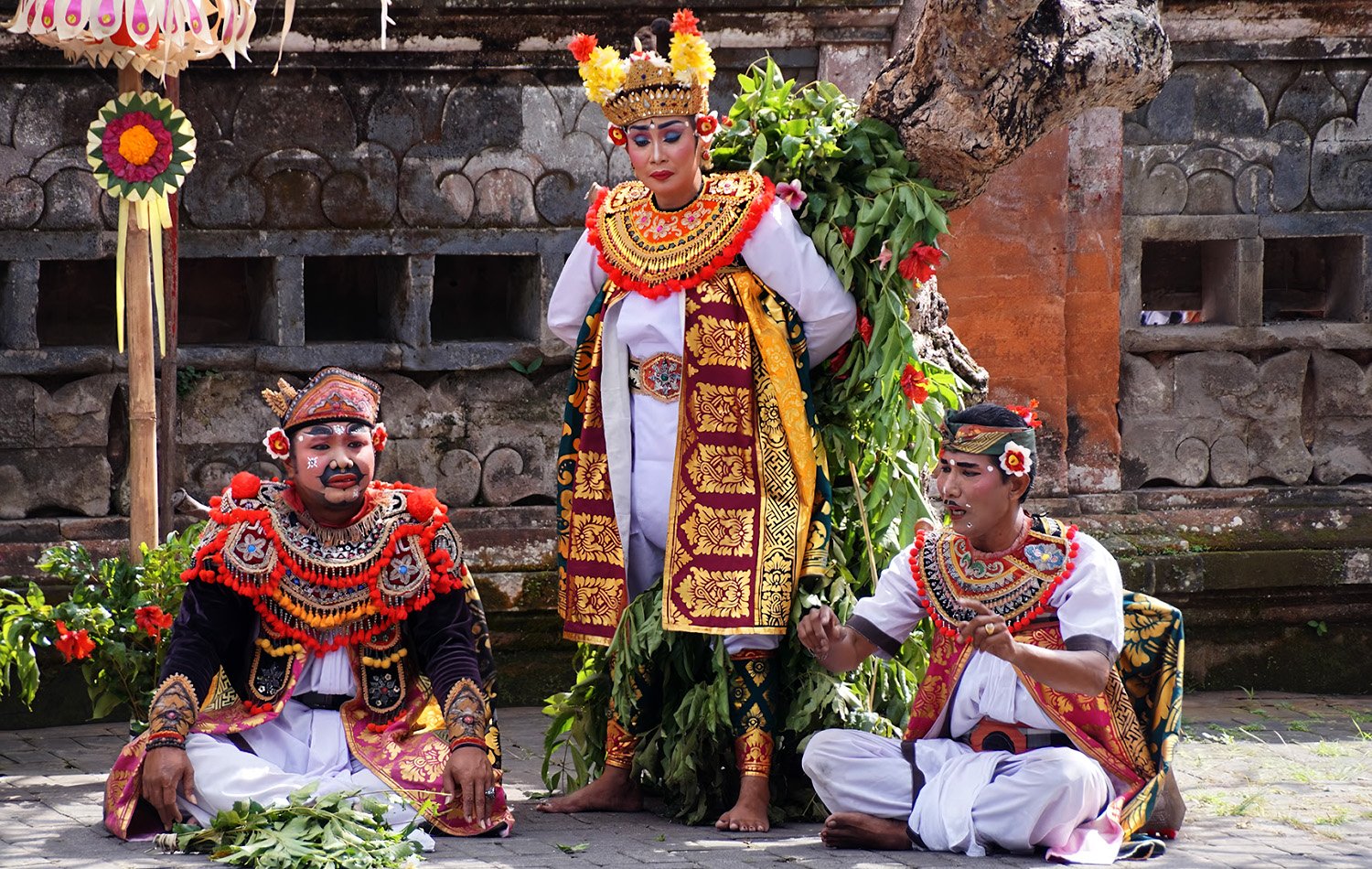The Barong Keris Dance is one of Bali’s most iconic and culturally significant traditional performances. Rooted in Balinese mythology and spiritual traditions, this dance-drama portrays the eternal battle between good and evil through the characters of Barong, a mythical lion-like creature symbolizing good, and Rangda, a fearsome witch representing evil.
The performance typically takes place in a temple courtyard or an open-air stage, accompanied by a live gamelan orchestra that enhances the dramatic and mystical atmosphere. The dance is characterized by elaborate costumes, intricate masks, and expressive movements that convey the story’s intense emotions and moral lessons.
The Barong Keris Dance begins with the appearance of the Barong, a protective spirit often depicted with a lion’s face and a flowing mane. The Barong is usually accompanied by playful monkeys and other mystical creatures. As the dance progresses, Rangda, the powerful witch, enters the scene, casting spells and summoning her followers to fight against the forces of good.
One of the most dramatic moments in the dance is the Keris Dance segment, where the followers of Rangda fall into a trance and attempt to stab themselves with keris (traditional daggers) but are protected by the Barong’s magical powers. This part of the performance highlights the spiritual aspect of the dance, showcasing the deep connection between Balinese religion and art.
To make the most of your experience watching the Barong Keris Dance, consider these tips:
- Arrive early: Arriving early ensures you get a good seat and allows you to take in the atmosphere before the performance begins.
- Understand the story: Familiarize yourself with the basic storyline and characters of the Barong and Rangda to fully appreciate the performance.
- Respect the performers: As a cultural and spiritual performance, it is important to show respect to the performers and the traditions they are portraying. Avoid talking or using flash photography during the dance.
- Dress appropriately: If the performance is held in a temple, wear respectful clothing that covers your shoulders and knees. Sarongs and sashes are often provided at the entrance if needed.
- Enjoy the music: Pay attention to the gamelan orchestra, as the music plays a crucial role in setting the tone and enhancing the storytelling.
The Barong Keris Dance offers a captivating glimpse into Balinese culture and spirituality, combining intricate choreography, vibrant costumes, and powerful storytelling. Watching this traditional performance is a must for anyone seeking to understand and appreciate the rich cultural heritage of Bali.



